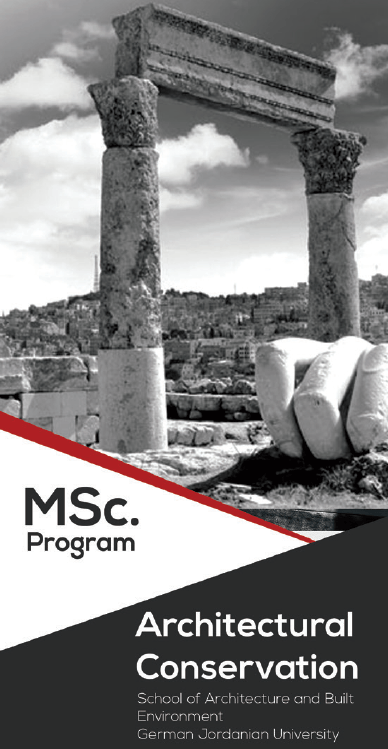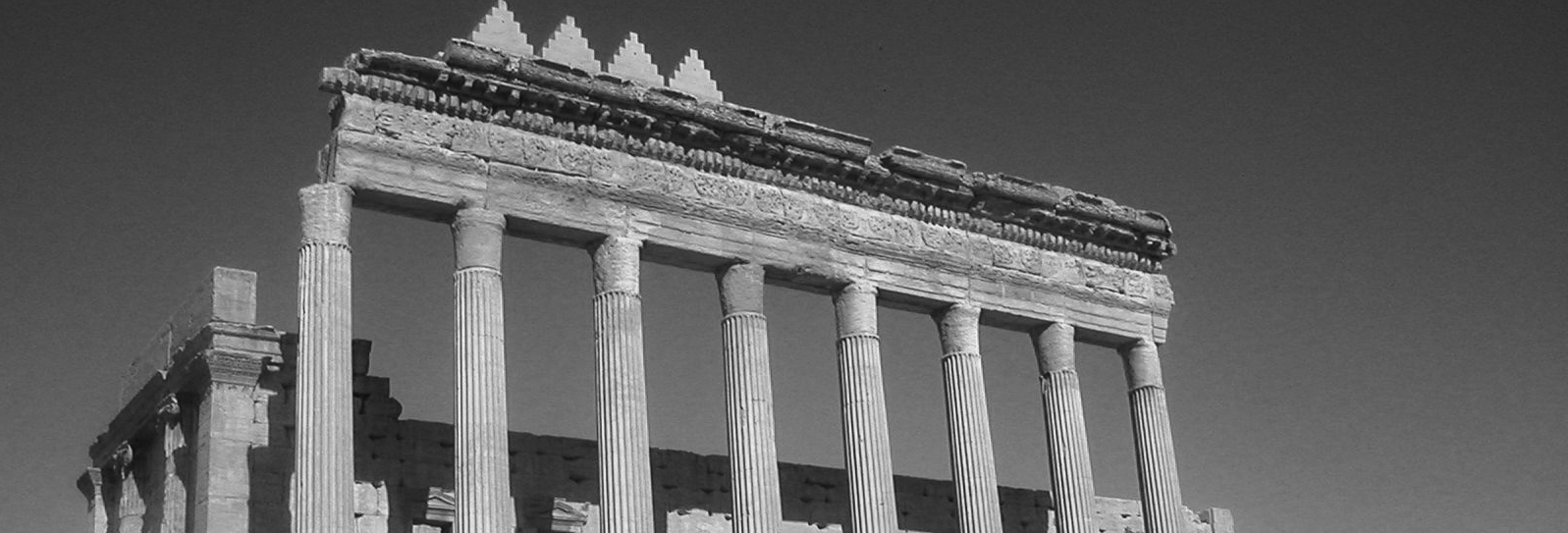
Publications
- Home
- Publications

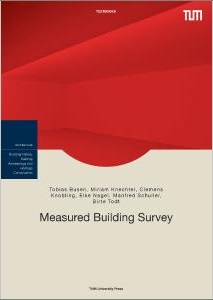
Measured Building Survey (Englische Version)
Tobias Busen, Miriam Knechtel, Clemens Knobling, Elke Nagel, Manfred Schuller, Birte Todt
The precisely measured documentation of historical buildings by means of drawings – the building survey – serves several purposes: it is not only an important part of the scientific study of architecture, but also an essential basis for building measures in existing contexts. In addition to a historical overview of building surveying as a method, this volume mainly offers practical assistance regarding the different methods for documenting historic buildings – starting from manual methods of measuring up to electronic and computer-aided utilities available today. The content is complemented by many illustrations and examples as well as an introduction to methods, that go beyond the mere graphic documentation and thus represent ways of conducting thorough building examinations. The book offers easy access to the topic of building surveying, both for students as well as for anyone dealing professionally with historic buildings
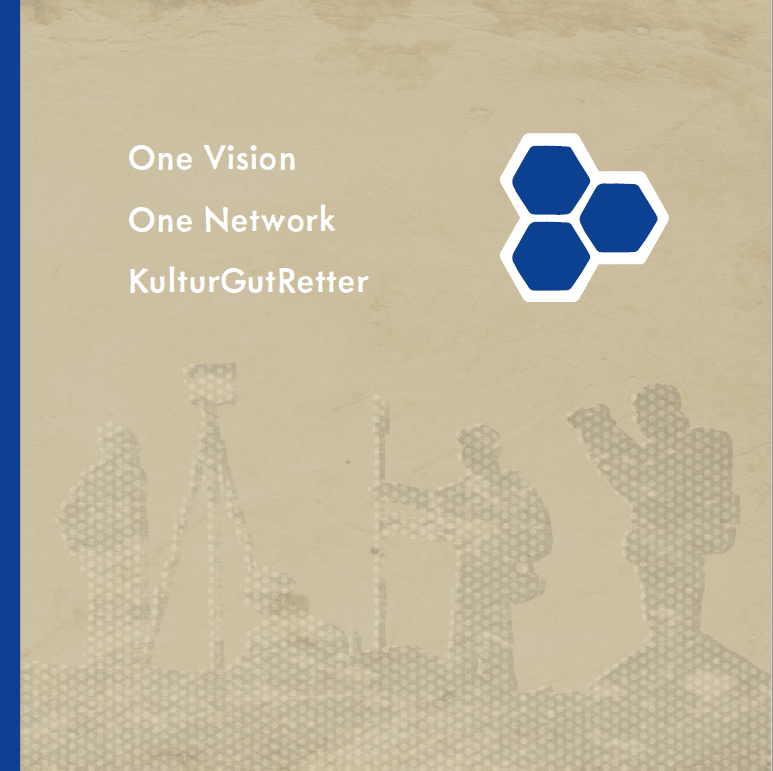
One Vision . One Network . KulturGutRetter
KulturGutRetter, German Archaeological Institute
The grafic novel shows what teams of the project “KulturGutRetter (KGR) – A mechanism for the emergency mechanism for cultural heritage in crisis situations” can do in the event of an earthquake to safeguard and protect cultural heritage.
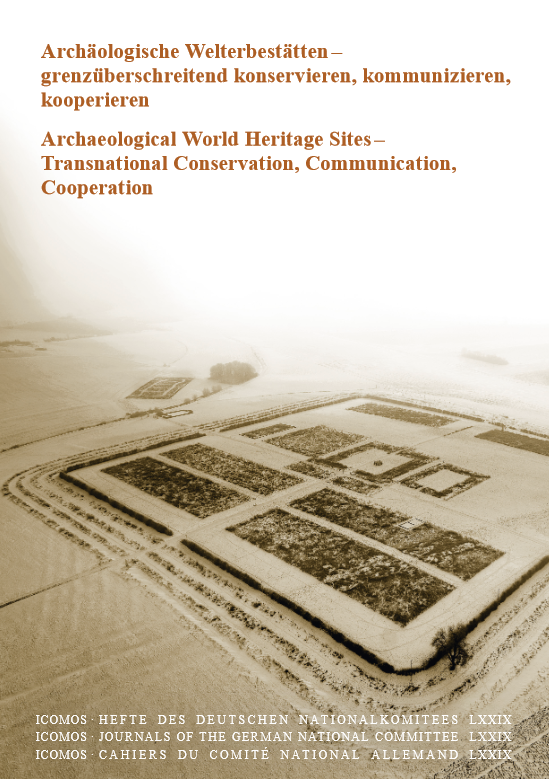
Archäologische Welterbestätten – grenzüberschreitend konservieren, kommunizieren, kooperieren / Archaeological World Heritage Sites – Transnational Conservation, Communication, Cooperation
Alexandra Riedel und Stefan Winghart (eds.)
(ICOMOS – Hefte des Deutschen Nationalkomitees LXXIX)
Berlin 2021, ISBN 978-3-945880-70-8
Archaeological world heritage faces many challenges. Climate change, urban sprawl, war, antique trade and over-tourism threaten cultural assets in Germany, Europe and worldwide. The online symposium “Archaeological World Heritage Sites – Transnational Conservation, Communication, Cooperation” held on November 5th and 6th, 2020 offered international experts a forum to present and discuss effective measures for the cross-border protection of World Heritage Sites.
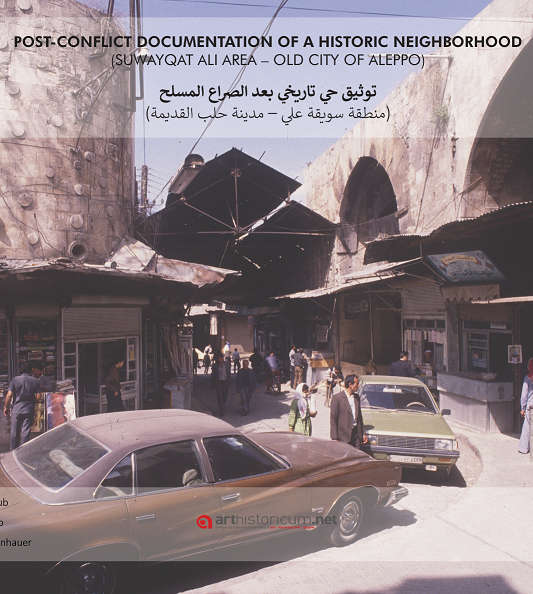
Post-Conflict Documentation of a Historic Neighborhood (Suwayqat Ali Area – Old City of Aleppo)
Thierry Grandin, Ruba Kasmo und Giulia Annalinda Neglia (Dima Dayoub, Ruba Kasmo, Anne Mollenhauer (eds.))
Aleppo is one of the oldest, constantly inhabited cities of the world. The old city still bears the remains of the Hellenistic street grid and historic monuments of various periods. The area of the study “Suwayqat Ali” is located to the north of the suq (market area). It is a mixed quarter that contains public and private buildings. The area was selected due to its functional diversity, historic importance and the serious damage it has sustained. The study presents a holistic view on the quarter: an urban analysis and the history and architecture of the most prominent buildings, including the present state. The publication is presented in English and Arabic.
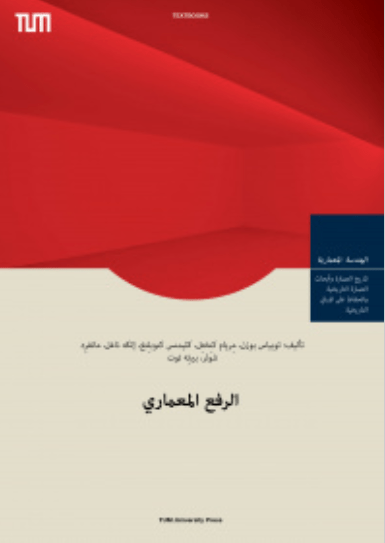
Building survey (Arabic version)
Tobias Busen, Miriam Knechtel, Clemens Knobling, Elke Nagel, Manfred Schuller, Birte Todt
The precisely measured documentation of historical buildings by means of drawings – the building survey – serves several purposes: it is not only an important part of the scientific study of architecture, but also an essential basis for building measures in existing contexts. It is the only way to undertake well-founded research respectively detailed architectural planning, from structural improvement to conservation and restoration measures.
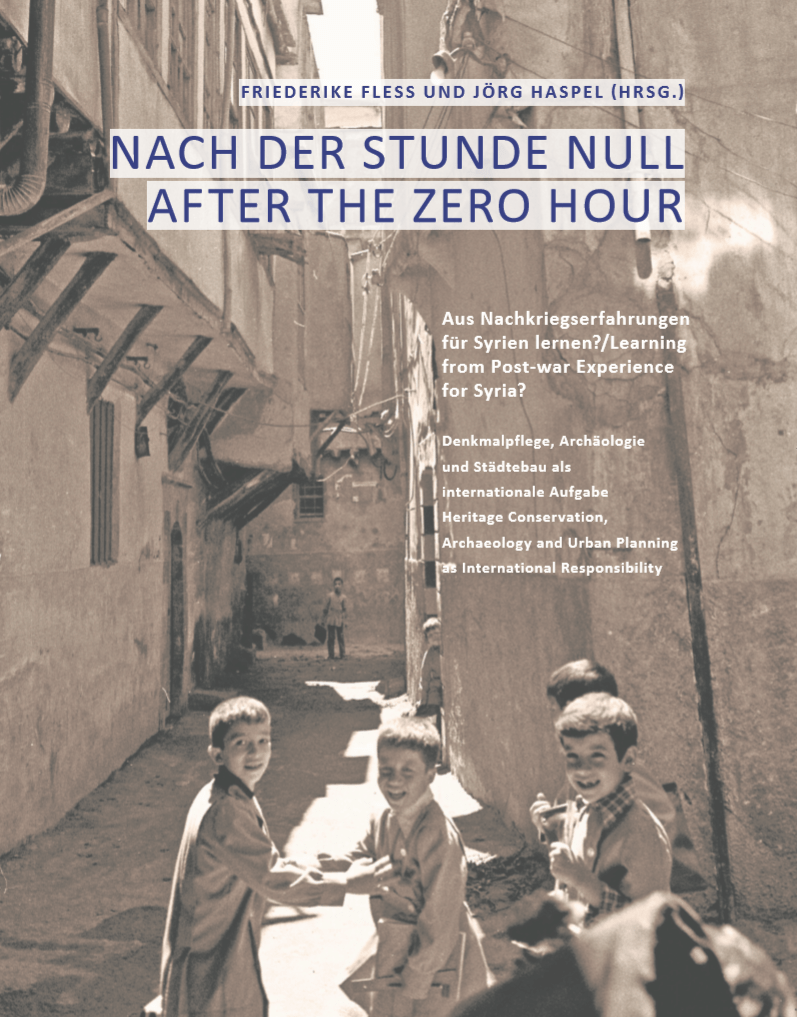
After the Zero Hour/ Nach der Stunde Null (EN/GER)
Friederike Fless und Jörg Haspel (eds.)
„After the Zero Hour – Learning form Post-War Experience for Syria? Conservation, Archaeology and Urban Planning as an International Responsibility. Articles presented at denkmal 2016 in Leipzig.
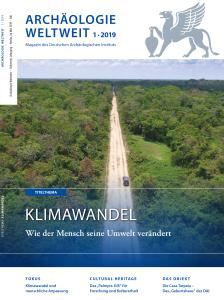
Archaeology Worldwide 1-2019 (EN)
Climate Changing
Modern archaeology examines all aspects of human life. This also includes under- standing the effect that climate change has had on the environmental conditions in which people lived in the past. At the same time, early societies had already changed their environment through the exploitation of resources and the development of agricultural techniques.
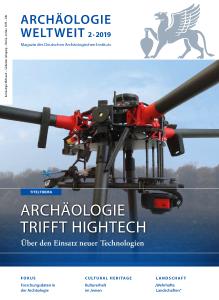
Archäologie Weltweit 1-2018 (GER)
Archäologie trifft Hightech
Moderne Ausgrabungen haben in den letzten Jahrzehnten eine digitale Wende vollzogen. Heute kommen z.B. digitale Messverfahren in unterschiedlicher Ausprägung zum Einsatz. Archäologische Projekte gleichen daher nicht selten Hightech-Unternehmungen. Diesem Thema widmet sich die aktuelle Magazinausgabe. Aber auch der Frage, wie man mit den umfangreichen digital gewonnen Daten umgeht und sie weltweit vernetzt und zugänglich macht.
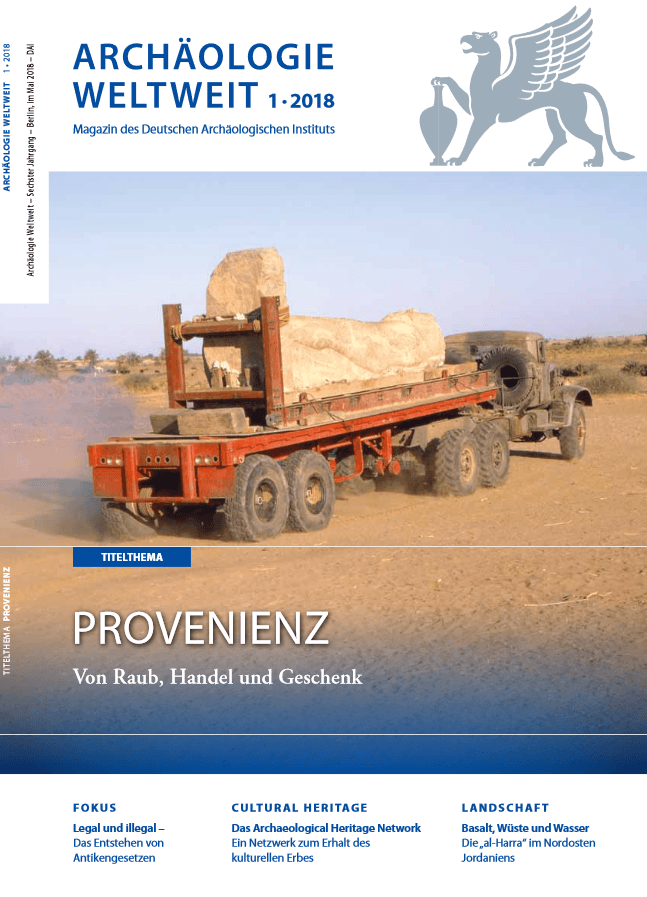
Archäologie Weltweit 1-2018 (GER)
Provenienz
Von Raum, Handel und Geschenk
Provenienz ist aktuell zu dem zentralen Thema im Umgang mit dem kulturellen Erbe geworden. Für die Archäologie gehört die Erforschung der Herkunft von Objekten hingegen schon immer zum Kerngeschäft. Das Titelthema beschäftigt sich daher mit der Provenienzforschung als hoch komplexer historischer Forschung aus dem speziellen archäologischen Blick heraus. Über den Wert von Scherben erzählt die Rubrik „Alltag Archäologie” und wie Zeichnungen bauforscherischen Ergebnissen Leben einhauchen, erfahren Sie im „Panorama”.

GER version only
Das Digitale und die Denkmalpflege (GER)
Bestandserfassung – Denkmalvermittlung – Datenarchivierung – Rekonstruktion verlorener Objekte
Birgit Franz , Gerhard Vinken (Hrsg.)
The ‘digital revolution’ is now in full swing. For heritage conservation, digital tools have opened new perspectives, finding application in the interactive visualization of past situations, the monitoring of threatened sites and artefacts, or the complex cross-referencing of heterogeneous collections of knowledge. At the same time, the limits and unsolved problems associated with using digital technologies are also becoming more apparent, for example with regard to maintaining the rapidly-growing volumes of data being generated.
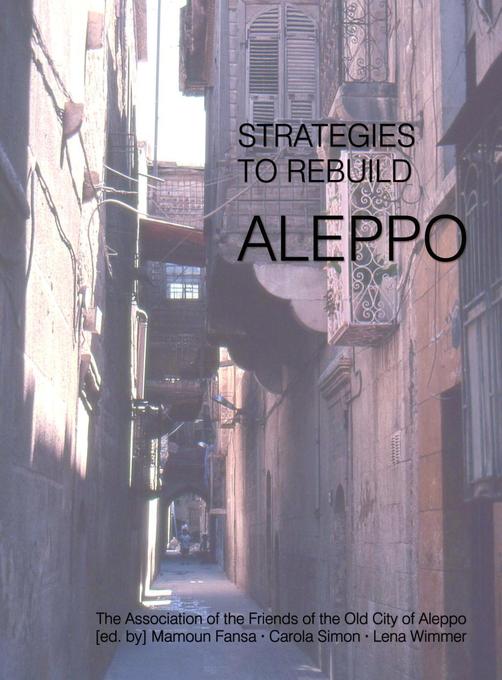
Strategies to Rebuild Aleppo (EN)
Mamoun Fansa, Carola Simon, Lena Wimmer (Hrsg.)
Since the Syrian war began in 2011, Aleppos human and cultural heritage has been in great danger. An publication realised by the Association of the Friends of the Old City of Aleppo.
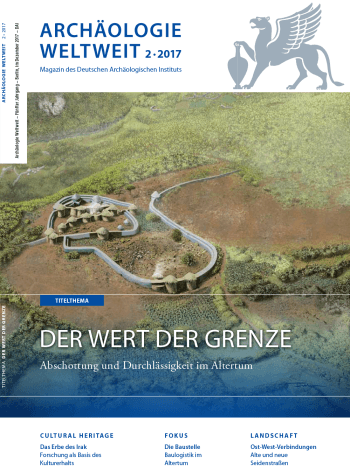
Archäologie Weltweit 2-2017 (GER)
Der Wert der Grenze
Abschottung und Durchlässigkeit im Altertum
Wie unterschiedlich Grenzen wirken, je nachdem aus welcher Entfernung man sie betrachtet, wie verschieden auch ihre Wirkung – oder Wirkungslosigkeit – sein kann, zeigt das Titelthema dieser Ausgabe von Archäologie Weltweit. Schier grenzenlos scheint die Arbeit des Friedrich Hinkel Archivs zum Sudan, einem der umfangreichsten und ungewöhnlichsten Archive des DAI zu sein, nachzulesen in “Alltag Archäologie”. Und dass die Baustellenlogistik der Antike häufig weit weniger an Grenzen stieß, als das heute gelegentlich der Fall ist, erklärt unser “Fokus”.
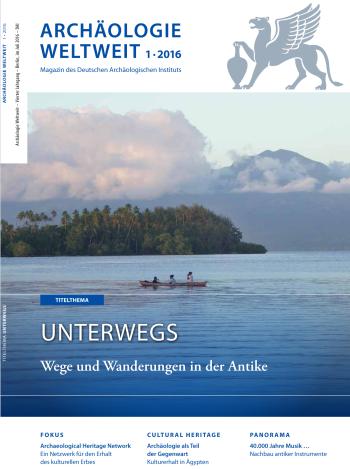
Archaeology Worldwide 1-2016 (EN)
On the Move
Mobility and Migration in the Ancient World
“On the Move” is the cover story in this issue of our magazine. Starting out with Neolithic journeys, it goes on to look at Greek sanctuaries with an international clientele, the Roman Empire shortly before its transformation into the medieval world, ports on various continents, and it ends with a voyage to the far-off South Pacific. In Focus this time is a recently founded archaeological heritage network that shows how current transformative movements can be an occasion to meditate on common origins and can promote cooperation. Our Panorama feature meanwhile reports on an indispensable human activity and the part it has played in the lives of all of us for 40,000 years now: music.
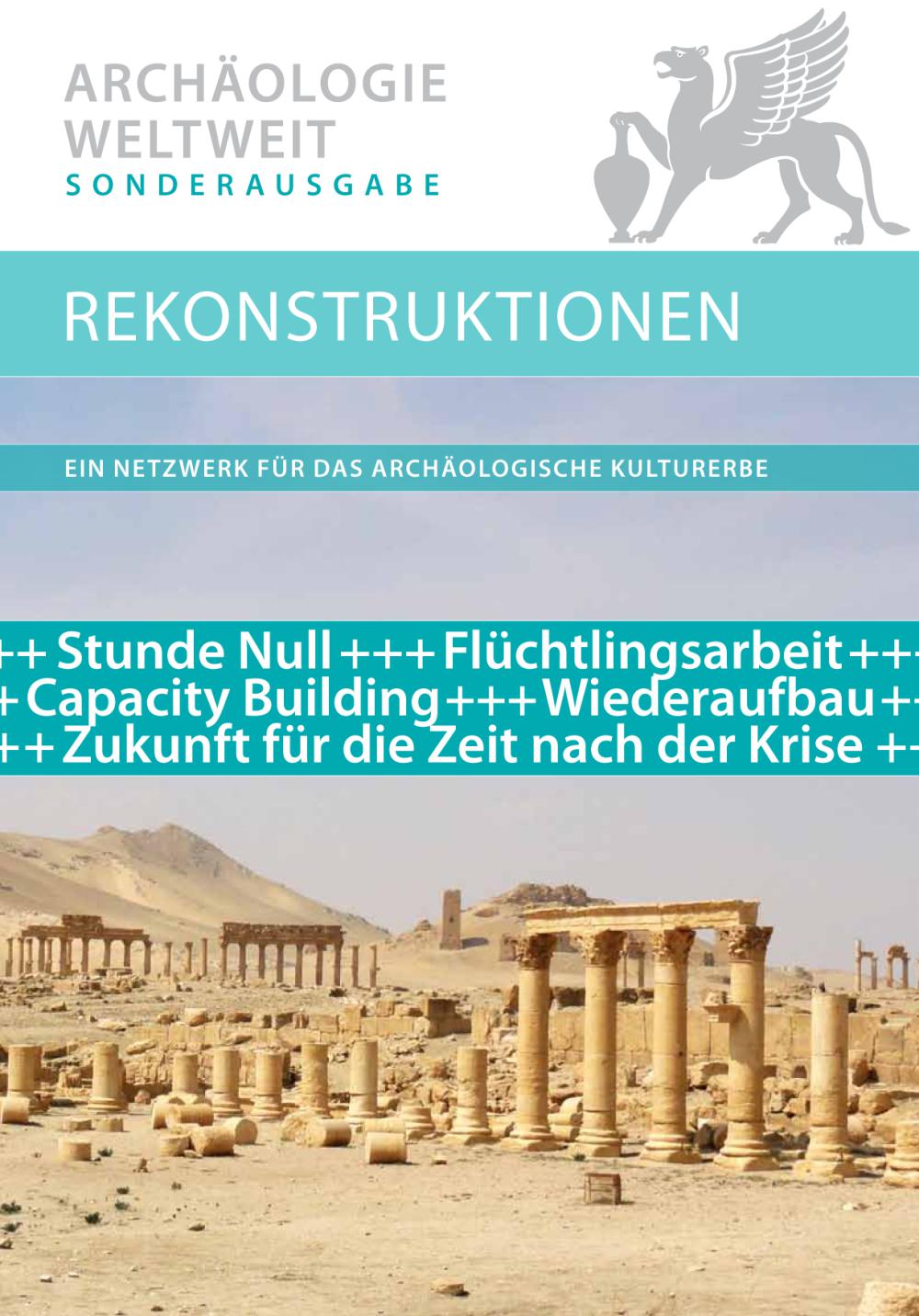
Archaeology Worldwide Special Issue 2016 (EN)
Reconstruction. A network for archaeological cultural heritage
The Archaeological Heritage Network (ArcHerNet) brings together German expertise in the field of cultural preservation and cultural heritage protection. The objective is to make this expertise available for cultural preservation projects in other countries too. The first such project to be implemented by the ArcHerNet, with the support of the Foreign Office, is “Stunde Null” (“zero hour”), aimed at developing a viable future for the time after the crisis in countries that are riven by conflict. Learn more about ArcHerNet in this special issue of Archaeology Worldwide!
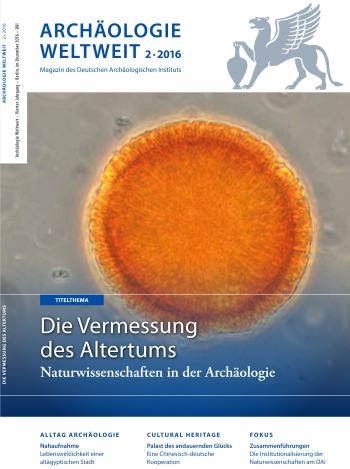
Archaeology Worldwide 2-2016 (EN)
Surveying the Ancient World
In this issue, our Cover Story illustrates how the collaboration between archaeology and the natural sciences can function. And how international cooperation specifically can lead to ground-breaking results is shown in the Cultural Heritage section with a feature on Chinese-German activities at the Sacred Pond Pavilion in the Forbidden City, Beijing. The Panorama section proves the point that authors of archaeological manuscripts should never give up hope. It can happen that they get published 90 years after submission.
